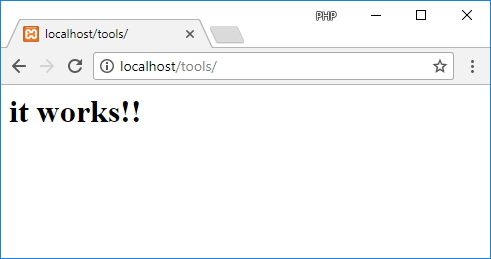Introduction to PHP – Installation
To start using PHP you need a web server running PHP and MySQL. Although MySQL is not a must for using PHP, mixing this two you can achieve great things.
You can easily find a hosting provider that supports PHP and MySQL. Since PHP coming for free, your hosting provider will surely support it. The simplest way to stat make use of it is by uploading some PHP files and access them via URL.
On the other hand you can install PHP locally on your computer.To install it locally on your PC you will first need to:
- install Apache webserver for example
- install PHP package
- add MySQL database support
You can find a complete PHP and dependencies installation guide here: http://php.net/manual/en/install.php
All in one PHP sulution
If you just want to jump and write some PHP code, build some test pages and see what happens, you can use XAMPP package. According to XAMPP developers, it is an “easy to install Apache distribution containing MariaDB*, PHP, and Perl”. And it “has been set up to be incredibly easy to install and to use”.
I am a big fan of it and I encourage you to use ti before working with more complex environments. You can download XAMPP here: https://www.apachefriends.org/
*MariaDB is basically a new and free version of MySQL. It is a fork of the good old MySQL, and it’s becoming a replacement for MySQL after ORACLE buying it.
In this tutorial, for the sake of simplicity we will assume that you are using a locally installed XAMPP and you are ready to write some PHP code.
To test your installation just create a new directory inside “C:xampphtdocs” and place a new index.php file inside. This code should be enough to test that everything is in place
PHP
<?php echo "<h1>it works!!</h1>"; ?>
You should get a similar result.

Great! you are now ready for the next step.
Python Example for Beginners
Two Machine Learning Fields
There are two sides to machine learning:
- Practical Machine Learning:This is about querying databases, cleaning data, writing scripts to transform data and gluing algorithm and libraries together and writing custom code to squeeze reliable answers from data to satisfy difficult and ill defined questions. It’s the mess of reality.
- Theoretical Machine Learning: This is about math and abstraction and idealized scenarios and limits and beauty and informing what is possible. It is a whole lot neater and cleaner and removed from the mess of reality.
Data Science Resources: Data Science Recipes and Applied Machine Learning Recipes
Introduction to Applied Machine Learning & Data Science for Beginners, Business Analysts, Students, Researchers and Freelancers with Python & R Codes @ Western Australian Center for Applied Machine Learning & Data Science (WACAMLDS) !!!
Latest end-to-end Learn by Coding Recipes in Project-Based Learning:
Applied Statistics with R for Beginners and Business Professionals
Data Science and Machine Learning Projects in Python: Tabular Data Analytics
Data Science and Machine Learning Projects in R: Tabular Data Analytics
Python Machine Learning & Data Science Recipes: Learn by Coding
R Machine Learning & Data Science Recipes: Learn by Coding
Comparing Different Machine Learning Algorithms in Python for Classification (FREE)
Disclaimer: The information and code presented within this recipe/tutorial is only for educational and coaching purposes for beginners and developers. Anyone can practice and apply the recipe/tutorial presented here, but the reader is taking full responsibility for his/her actions. The author (content curator) of this recipe (code / program) has made every effort to ensure the accuracy of the information was correct at time of publication. The author (content curator) does not assume and hereby disclaims any liability to any party for any loss, damage, or disruption caused by errors or omissions, whether such errors or omissions result from accident, negligence, or any other cause. The information presented here could also be found in public knowledge domains.
Google –> SETScholars
